Farmer John Writes: Honor the Farm
Extended Season Week 4, December 6th – 11th, 2021
Finale
This is the final week of the extended season, and the final week of the 2021 season. We have been fortunate with the fall weather, with yields, and a good crew. I hope you feel that the farm took good care of you this year.
What’s Next?
My tendency is to ramp up the work when the season ends and go full tilt until the next season starts, because there is so much that needs to be done here that we cannot get to during the busy season. Haidy recently pointed out to me that I should be strategic about what winter projects to take on, as there should be at least some downtime in the winter. She’s right.
Final Installment
The topic of farmstead design has been overdue, I guess, as it has dominated my last few newsletters, including this one. Upon just now reviewing the four newsletters for the extended season, they all address my approach to farmstead design from various angles.
Hints
I can only offer hints of my design process, due to limited space in the hard copy and limited time. It occurs to me that I could write a chapter and probably a whole book about the design projects here on the farm, what informed them, limited them, expanded them. I hope that my brief indications that I am offering here might give you some insights into my process and perhaps provide you with a richer experience of the Angelic Organics farmstead when you visit it. Perhaps my musings will even inform some of your own future design decisions.
A few of my design standards/insights/methods are:
- I let the building (the project) speak to me.
- I use recycled or salvaged materials when they fit the purpose and the design.
- Salvaged materials are often more authentic than contemporary building materials.
- Materials emit their essence.
- Marble has the vibration of marble, the intrinsic quality of marble.
- A surface conveying an image of a marble surface is not marble, just like a photograph of a person is not the person.
- Marble has the vibration of marble, the intrinsic quality of marble.
- I endeavor to build what will never need to be updated.
- I renovated Haidy’s and my limestone home 50 years ago with a limestone addition, slate, marble, hardwoods, stained glass and wrought iron. Over 75 items of architectural salvage are incorporated into the design of our home, not primarily because they are salvage, but because they are authentic and inherently beautiful.
- What these materials offer aesthetically is key to why these materials were selected and key to the intrinsic and enduring beauty of our home.
- Haidy says the design is timeless, except, ironically, the bedroom needs to be updated, because it was designed by a designer according to principles that were modern or current at that time
- I suppose a better term than update is to undate, as timeless design has no date.
- Does the Acropolis need updating?
- I renovated Haidy’s and my limestone home 50 years ago with a limestone addition, slate, marble, hardwoods, stained glass and wrought iron. Over 75 items of architectural salvage are incorporated into the design of our home, not primarily because they are salvage, but because they are authentic and inherently beautiful.
- It usually takes way too long to get back to an unfinished project, so I give a project my all to finish it, once I start it.
- I consider it unethical to not complete a project; such incompletion weighs on my conscience.
- Most projects are fraught with unexpected construction challenges and cost overruns.
- If I expect these, they are not unexpected.
- When I think the project is near completion, it’s not.
- The remembered past, the known present and the likely future all enter into how I work with a building.
- As much as the future seems known, it is still a mystery. I design for specific future purposes, knowing that other unanticipated purposes might emerge and need to be served by the design.
- I pretty much never draw a sketch or a blueprint. My guys here on the farm, who have been working here for years, know what I want with a few gestures and words from me.
- Sometimes, a building will want a feature that seems excessive or preposterous. The feature might be an alcove, a shrine, a blue light, or a disco ball.
- It’s hard to know what to do then. Often I go with it, because I think in the long run, the building knows best.
- Sometimes I refuse to indulge the building, because buildings, like children, can be wrong.
- Echoing a lament of film directors, seldom do I get what I envision.
- Occasionally the result is better than I envision; often it’s not as good.
- Sometimes I let it be when it disappoints me; sometimes I remedy it—it all depends.
- Saving, energy, using non-toxic materials, conserving water are important.
- These reside in the realm of ecological function, and one might add ecological aesthetics.
- I always consider how my fellow human beings will feel while entering into and being in the spaces I design.
- Even when I am on a tight budget, the creative impulse must be integrated throughout the building project. It will still shine through.
- Beauty is not to be added on, in case there is time and money for it. Beauty is as essential as function, and must be integrated, not patched on later.
- Even when I am on a tight budget, the creative impulse must be integrated throughout the building project. It will still shine through.
- After a building project is completed, a policy of order and cleanliness is continually upheld in the space.
- Frank Lloyd Wright even looked inside the closets and cabinets of his clients to see if they were upholding his design standards throughout their home.
- With the proper care, buildings metamorphose, and eventually flower.
- The space between the buildings is part of the design of the building.
- A farmstead is a constellation. Stars shine forth in part because of the space between them.
- I don’t design to make myself look good. I design to make other people look good (and feel good).
Balance
Appropriate building design relies on many delicate processes, because the whole design has to harmonize—colors, textures, shapes, sizes, materials, windows, light, the space between the buildings, etc. For instance, a beautiful element can be too sensational for the rest of the structure or the constellation of structures. I pondered the entrance to our milkhouse for years, because it had to be special, but not so special that it took away from the rest of the farmstead.
I finally chose a vintage cottage door with leaded glass that has a slightly rounded top, echoing but not imitating the arched roof. In spite of its slight flair, one might even think that the door is original to the milkhouse. Installed above it is a round window embedded with colored glass prisms that cast multi-colored light into the interior in the mornings. The combination of arched door and prismatic window is almost a bit much, but the milkhouse is a centerpiece of the farmstead and it wants to be just a little flamboyant. It doesn’t seek to dominate the rest of the farmstead; it seeks to heighten the experience of the whole farmstead. I could not achieve this sort of aesthetic without love and respect for the milkhouse and farmstead, and the corresponding guidance that the milkhouse itself has imparted to me.
This guidance was informed to a degree by my history with the building: I chose the arched form when I was eight; from when I was nine years old to twenty, we kept our milking equipment in the milkhouse; I poured hundreds of thousands of gallons of milk into the cool stainless tank inside the milkhouse; when we sold the cows, I converted the milkhouse into a cozy apartment where I lived for several years. The milkhouse was like a friend or a partner–supporting me, housing me, comforting me–and, when it was time to re-purpose it, it whispered to me how to proceed. This process is about as local is it can be, given that I saw the milkhouse built in 1957 when I was 8, and have had it in my heart and my mind for the decades since.
Feeling My Way
It is important to note that this process does not come about primarily from thinking; it comes about from feeling—feeling my way into the form, into the history, into the need. The feelings emerge into the world of conscious thought and also penetrate into the will. I do not understand the process by which the buildings here speak to me and share their needs and wants with me. It is almost as if the buildings are entities, are beings. What I do understand, however, is that love is at the basis for the whole process, from beginning to end.
A Hike
While hiking the Italian Alps, when I was taking a break from touring with the film The Real Dirt on Farmer John, the corn crib on the farm spoke to me for many hours, day after day, suggesting colors, arches, walkways, staircases, even insisting on a disco ball. These images formed more vividly in my imagination than they even exist for me now in the physical. Not only did they vividly form as images, they formed as sequences for how to achieve the actual construction results. Over the next several years, I executed these designs in the corn crib, as it requested.
I refer you to the Metamorphosis of the Peterson Farmstead for a photo review of the re-purposing of our corn crib, which was mostly inspired by visions/imaginations that I received while hiking the Italian Alps. Below are samples of photos you will encounter at that link. Notice how the corn crib eventually flowers.
You will also find in that link documentation of the renovation of the main barn, and the renovation of the farmhouse. This link will provide you with a feeling for the vast scope of work with the buildings here at Angelic Organics, including how they continue to metamorphose.
To learn more about my inspiration for the creation of spaces on the farm, check out my presentation given in our barn loft as a pre-conference event for the 2012 Biodynamic Conference, Awakening to the Social Organism of the Farm and the Design of Social Spaces.
The Money
I’ll note that this imaginative design process never takes into account where the money will come from to finance the projects. The buildings never whisper to me how to afford the needed changes while they are imparting their longings to me. I thought that my tour with the film would at least provide the funds to replace the leaky roofs on my buildings, but no. Maybe, if I were to love money the way I love my buildings, money would start to speak to me.
Haidy Said
“A building is like a child. At first it’s like a baby, and you are not really sure what it wants to become. Over time, it expresses itself more and its personality starts to emerge. You help it become what it wants to be.”
Our Best to Your Holiday Season,
Farmer John, Haidy, and the Rest of Us at Angelic Organics

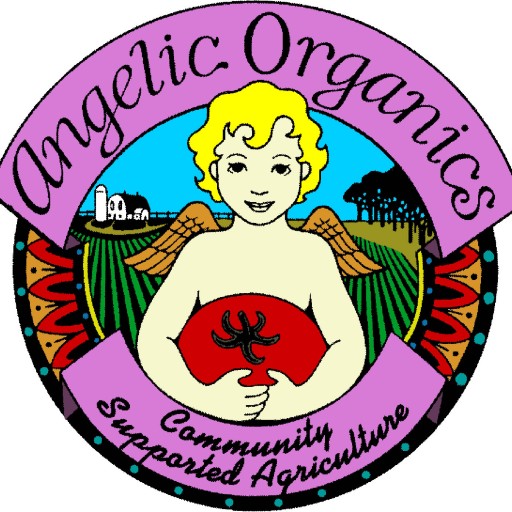

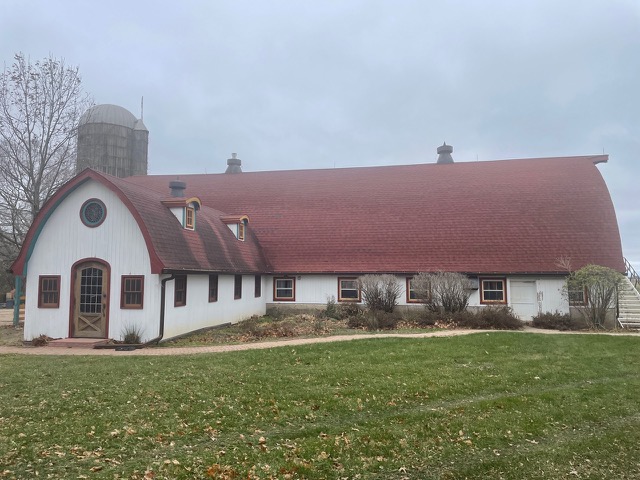
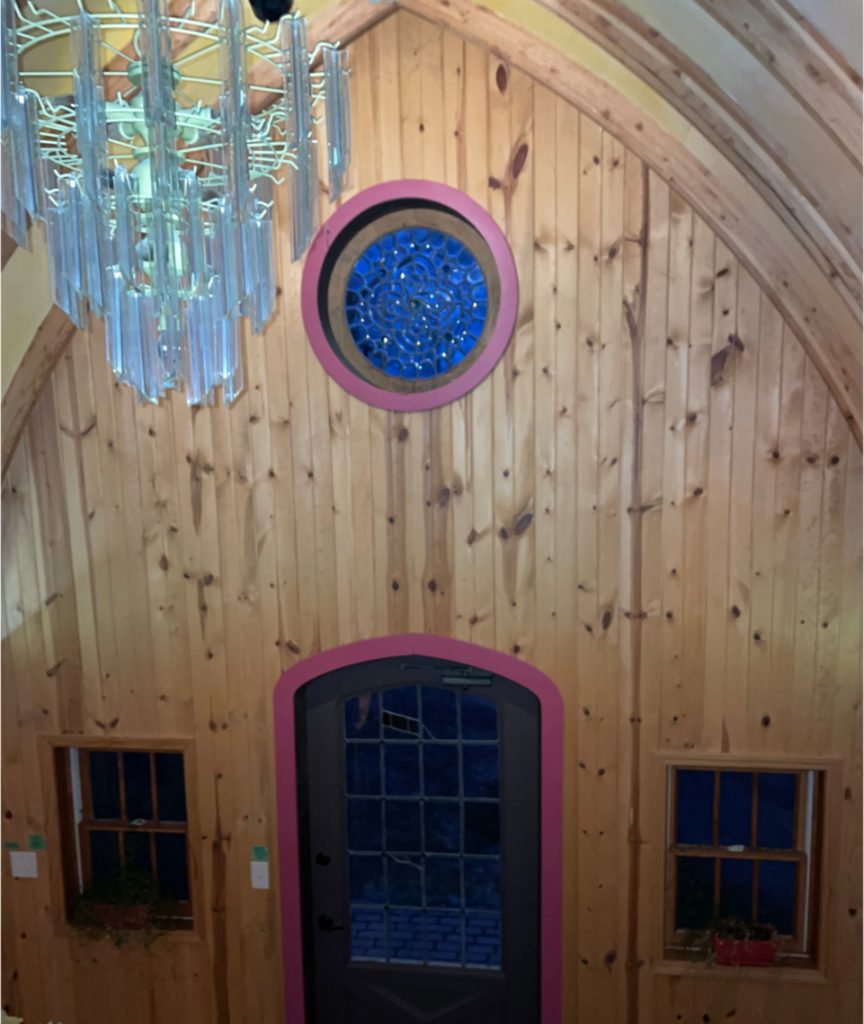
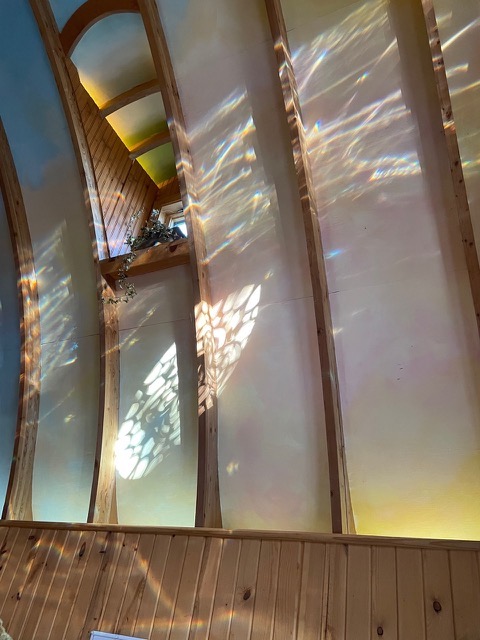

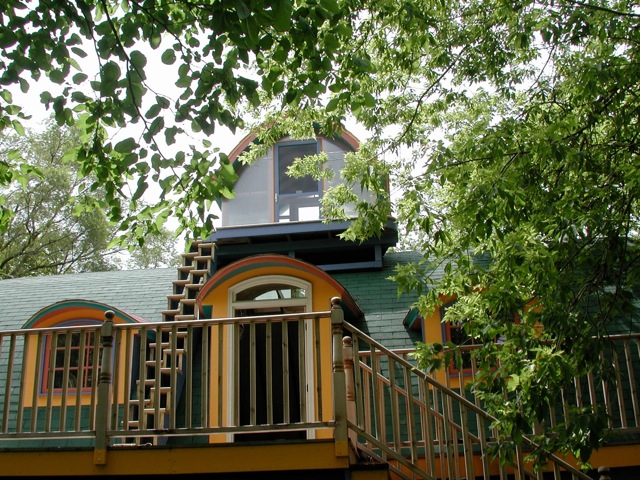


I really like your design related statement about marble and natural stone. We recently had a counter-top choice between what the kitchen industry refers to as “quartz” and natural granite. We were tempted mightily to go with the nearly white trendy “quartz” but instead nervously chose granite – hoping against hope it would not dash our design goal of updating the kitchen. The result? The light colored granite slab gave the entire kitchen a special vibe. Its natural wavy grain striations so resembled a wave washed shoreline that it gently guided the back splash and wall paint choice. Too bad it was a rental unit – being a former Coast-guardsman I really wanted to move in and start digging through antique shops for a classy model sloop to continue the decor.
Jeff, I so enjoy your communication. I need to give you a tour of the farmstead some day, when you are in the area and when I have time–seems someday those two will converge.
I feel such gratitude for your newsletters this year. After many years of membership, I’ve been most engage with the Farm this year by reading every newsletter and visiting the farm during Field Days. Your thoughts and words are expansive. Thank you for the season…and many seasons of expansiveness and sustaining food.
Mark, Something slightly different entered into the 2021 editions of Farm News–not really sure where it came from. Mostly, I would sit down on a Saturday and write an issue, sleep on it and complete it on a Sunday. The newsletters sort of wrote themselves, though I would mot call the process effortless. Thanks for your many years of support.